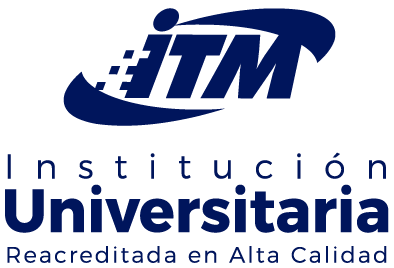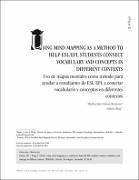Mostrar el registro sencillo del ítem
Uso de mapas mentales como método para ayudar a estudiantes de ESL/EFL a conectar vocabulario y conceptos en diferentes contextos
| dc.contributor.author | Gómez Betancur, Martha Inés | |
| dc.contributor.author | King, Gideon | |
| dc.date.accessioned | 2019-07-16T17:03:20Z | |
| dc.date.accessioned | 2019-08-23T16:40:56Z | |
| dc.date.available | 2019-07-16T17:03:20Z | |
| dc.date.available | 2019-08-23T16:40:56Z | |
| dc.date.issued | 2014-08-15 | |
| dc.identifier | https://revistas.itm.edu.co/index.php/trilogia/article/view/439 | |
| dc.identifier | 10.22430/21457778.439 | |
| dc.identifier.uri | http://hdl.handle.net/20.500.12622/1271 | |
| dc.description.abstract | El funcionamiento del cerebro muestra que el pensamiento no es lineal. Las personas pueden entender mejor los conceptos cuando tienen representaciones visuales de las ideas. Estas imágenes son personificaciones externas de «Pensamiento Irradiante». El comprender cómo funciona la mente para conectar conceptos, ayuda a los educadores a proporcionar estrategias de vocabulario que apoyen el aprendizaje de los estudiantes. El diseño de mapas mentales, a mano o mediante el uso de software, ha demostrado ser una buena técnica para el pensamiento creativo y el aprendizaje. Este estudio reflexiona sobre cómo los mapas mentales ayudan a los estudiantes ESL/EFL a conectar conceptos en diferentes contextos, permitiéndoles crear asociaciones entre palabras e imágenes para aprender mejor y memorizar la información en un segundo idioma. | spa |
| dc.format.mimetype | application/pdf | |
| dc.language.iso | eng | |
| dc.publisher | Instituto Tecnologico Metropolitano (ITM) | spa |
| dc.relation | https://revistas.itm.edu.co/index.php/trilogia/article/view/439/445 | |
| dc.rights | Derechos de autor 2017 trilogía Ciencia Tecnología Sociedad | spa |
| dc.source | 2145-7778 | |
| dc.source | 2145-4426 | |
| dc.source | Trilogía Ciencia Tecnología Sociedad; Vol 6 No 10 (2014); 69-85 | eng |
| dc.source | Trilogía Ciencia Tecnología Sociedad; Vol. 6 Núm. 10 (2014); 69-85 | spa |
| dc.subject | Investigación del cerebro | spa |
| dc.subject | adquisición de vocabulario | spa |
| dc.subject | estrategias de vocabulario | spa |
| dc.subject | estilos de aprendizaje | spa |
| dc.subject | mapas mentales | spa |
| dc.title | Uso de mapas mentales como método para ayudar a estudiantes de ESL/EFL a conectar vocabulario y conceptos en diferentes contextos | spa |
| dc.title.alternative | Using mind mapping as a method to help ESL/EFL students connect vocabulary and concepts in different contexts | |
| dc.subject.keywords | Brain research | eng |
| dc.subject.keywords | vocabulary acquisition | eng |
| dc.subject.keywords | vocabulary strategies | eng |
| dc.subject.keywords | learning styles | eng |
| dc.subject.keywords | mind mapping | eng |
| dc.type | info:eu-repo/semantics/article | |
| dc.type | info:eu-repo/semantics/publishedVersion | |
| dc.type | Articles | eng |
| dc.type | Artículos | spa |
| dc.relation.ispartofjournal | Trilogía Ciencia Tecnología Sociedad | |
| dc.description.abstractenglish | Current knowledge about the ways in which the brain works shows that thinking is not linear. Individuals can better understand concepts when they have visual representations of those ideas. These pictorial diagrams are manifestations of Radiant Thinking. Understanding how the mind works to connect concepts, helps educators provide vocabulary strategies that support students’ learning. Mind Mapping has proven to be a good technique for memorizing, creative thinking, and learning. This paper reflects on how mind mapping helps ESL/EFL students connect concepts in different contexts through the assistance of pictorial representations by hand and by the use of software that enables learners to create associations between words and images in order to better learn and memorize information in a second language. | eng |
| dc.rights.accessrights | info:eu-repo/semantics/openAccess | |
| dc.type.coar | http://purl.org/coar/resource_type/c_6501 |


